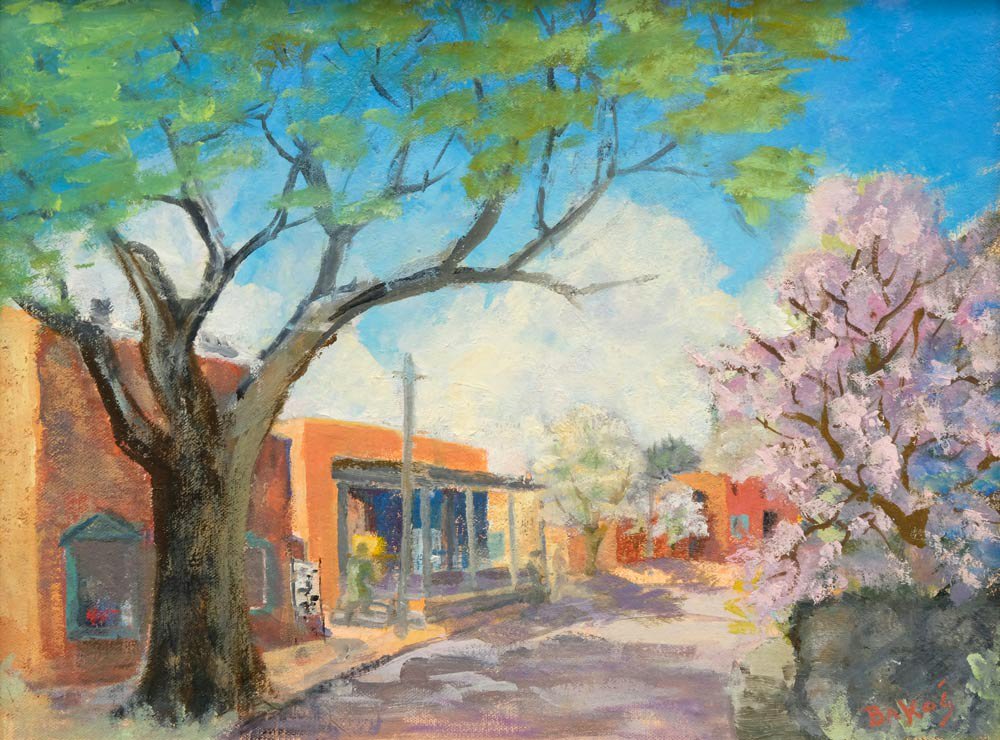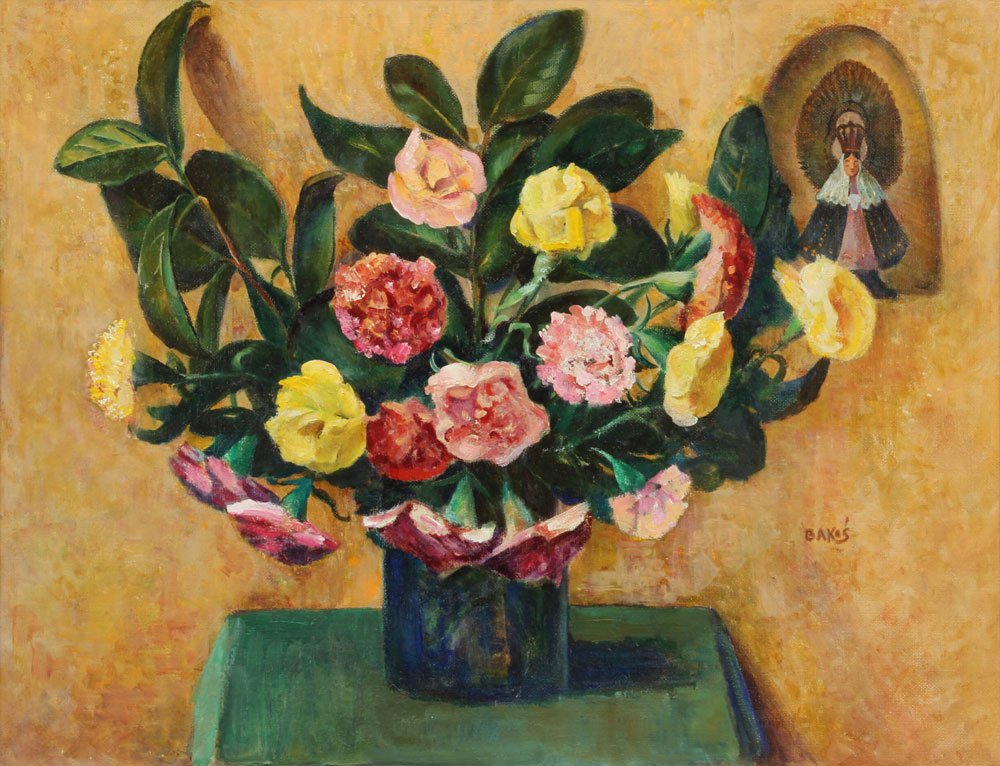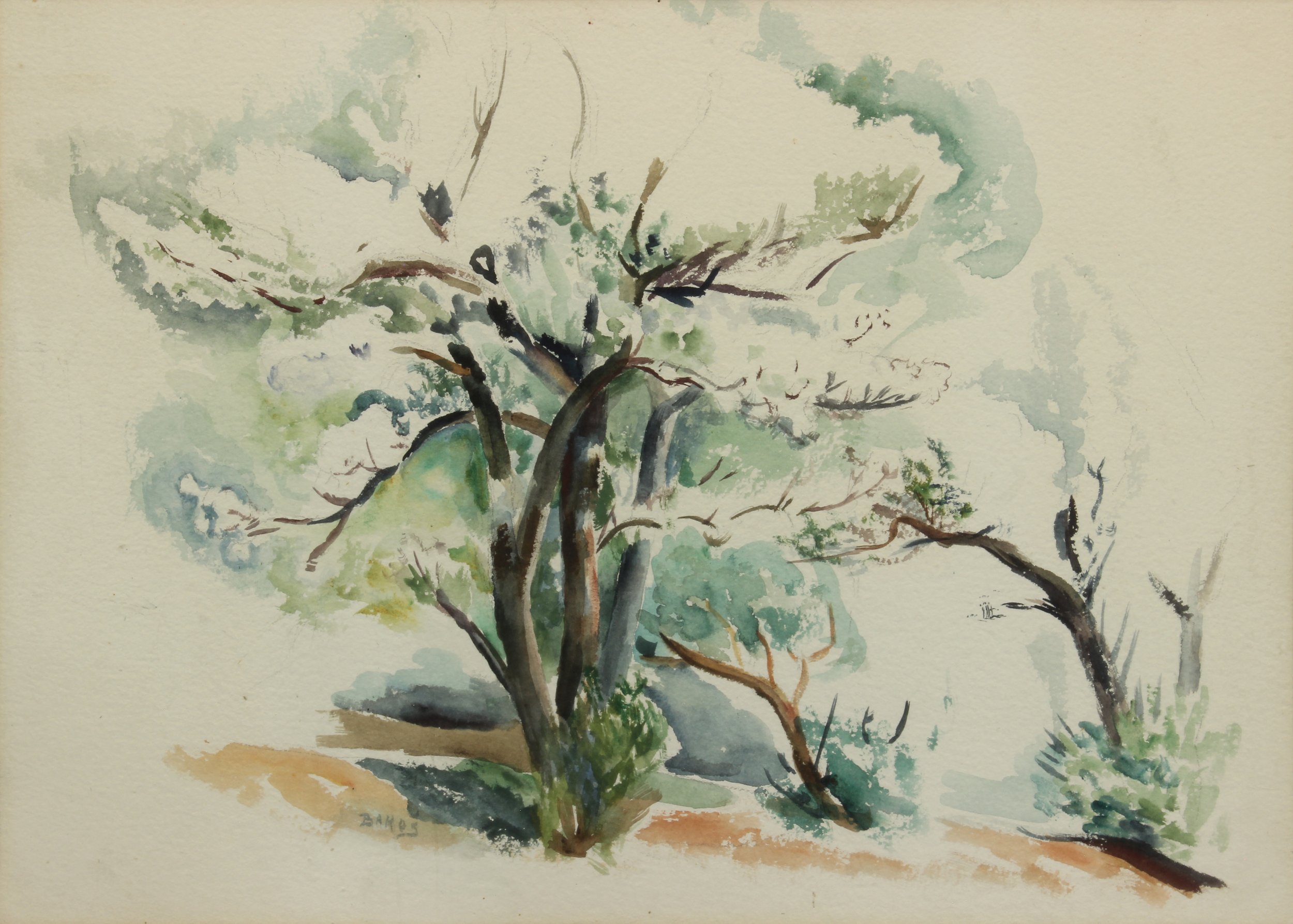Image Source: FACEBOOKJOZEF BAKOS
1891-1977
Jozef Bakos did not have the money to follow his fellow contemporaries to Paris to further his art education in the early 1900’s. He was a working man that came from Polish immigrants who migrated to Buffalo, New York in the late 19th century. His father passed down the ability to work as a woodcarver and general contractor.
Jozef’s early mentor was his art teacher John E. Thompson. Thompson provided the entrée to European art. Thompson brought to Buffalo the results of studying at the Academie Julian and living in Europe for a decade right before WWI.
Cezanne’s work had a big influence on Bakos. Childhood friends and fellow students, Walter Mruk and Augustine Korda, accompanied him to a traveling show of Western art by The Society of Men Who Paint the Far West. There for the first time he saw the works of Taos artists E. Irving Couse and Ernest Blumenschein. Bakos started painting impressions from this show.
JOZEF BAKOS BIOGRAPHY
-
Jozef Bakos did not have the money to follow his fellow contemporaries to Paris to further his art education in the early 1900’s. He was a working man that came from Polish immigrants who migrated to Buffalo, New York in the late 19th century. His father passed down the ability to work as a woodcarver and general contractor.
Jozef’s early mentor was his art teacher John E. Thompson. Thompson provided the entrée to European art. Thompson brought to Buffalo the results of studying at the Academie Julian and living in Europe for a decade right before WWI. Cezanne’s work had a big influence on Bakos. Childhood friends and fellow students, Walter Mruk and Augustine Korda, accompanied him to a traveling show of Western art by The Society of Men Who Paint the Far West. There for the first time he saw the works of Taos artists E. Irving Couse and Ernest Blumenschein. Bakos started painting impressions from this show.
Mruk and Bakos followed Thompson to Denver, Colorado. A year later all three of them entered into the 25th Annual Exhibition of the Denver Art Association. Their paintings created a public outrage. The western viewers did not like their first exposure to modernism and wrote scathing letters to the press about how this art reeked of Bolshevism.
In spite of this controversy, Bakos taught briefly at the University of Colorado until the school shut down from an influenza epidemic. He then visited Mruk in Santa Fe. He fell in love with the landscape and never left. The two of them worked for the U.S. Forest Service. This experience opened up visuals that are reflected in his oils. To make ends meet, he used his carpentry and woodcarving skills to make handmade furniture.
Bakos started a modernist art group with Walter Mruk, Willard Nash, Will Shuster and Fremont Ellis called Los Cinco Pintores. This group of young men definitely rebelled against the academic traditions in art. The Pintores wanted to have traveling art shows for the common man. Their show went on the road in the Midwest. Although these shows only lasted until the mid 1920’s, Bakos sold several works and was offered a teaching job at one of the leading universities. He declined.
Then next group Bakos co-founded was The New Mexico Painters. This was a result from he and William P. Henderson being rejected membership from the Taos Society. The Taos Society considered their work “too modern.” One of the big missions of New Mexico Painters was to transcend the rivalry between the two art colonies.
In 1929 Bakos married a countess and concert pianist named Teresa Di Locci Di Lanti. They became the fabric of the growing artistic colony in Santa Fe. His artistic output received national recognition. Bakos’s paintings are in collections of major museums such as the Whitney Museum of American Art, The Brooklyn Museum and Denver Art Museum.
















Watercolor on paper
15 x 21 inches
Signed lower right
INQUIRE